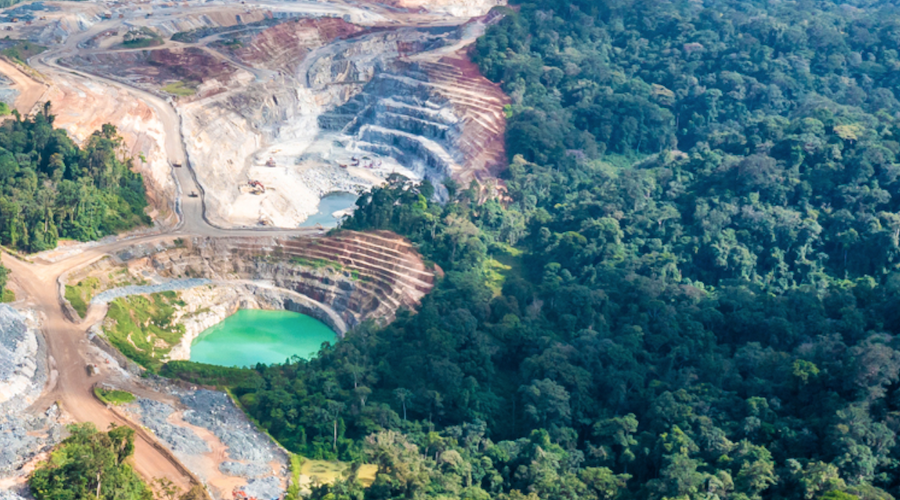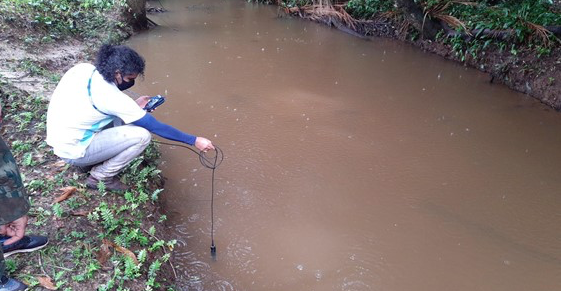Valentina Ruiz Leotaud | December 30, 2021

Tucano Mine. (Image courtesy of Great Panther Mining).
Vancouver-based Great Panther Mining’s (TSX: GPR) (NYSE-A: GPL) Brazilian subsidiary, Mina Tucano, has received three notices of infraction from the Amapá State Environmental Agency (SEMA), which alleges the miner polluted two freshwater streams in the northern Pedra Branca do Amaparí municipality causing a massive fish mortality event.

According to the agency, which also issued a $9 million fine to the company, a cyanide-rich effluent leaked from the Mina Tucano’s tailings dam in late November and caused environmental damage.
Government agents made two visits to the affected areas to collect water samples and analyze the state of aquatic fauna and flora. They then used georeferenced maps and satellite images to support their findings.

Water sample collection. (Image courtesy of the Amapá State Environmental Agency).
“Following a water sample collection and subsequent analyses, it was found that the waters of the Silvestre and Areia streams suffered interventions that had negative impacts on their physical, biotic and socioeconomic environments, as indicated by the significant loss of aquatic fauna and deep physical-chemical changes,” Josiane Ferreira, head of the SEMA, said in a media statement.
Local media reported that the communities that live around the stream have been left without both freshwater and their main source of animal protein, while some residents have been reporting health issues such as migraine headaches.
In response to the notices and the fine, which were issued on December 21, 2021, Great Panther published a statement on December 30, 2021, saying it intends to file a defence.
“Mina Tucano is actively investigating whether there could be any connection between the fish mortality event and the Tucano mine site,” the brief reads. “Based on its initial investigation, including independent reports on fish toxicology and water quality received by Mina Tucano on December 28, 2021, the company has prepared a formal defence against the position taken by the Agency. The notices impose aggregate fines of 50,000,000 Brazilian reals, payable by January 30, 2022. The company intends to appeal the amount of the fines and timing of any payment in its defence statements.”
The 197,283-hectare Tucano mine site is located in a remote, jungle area in the northeastern Amapá state, approximately 200 kilometres from Macapá, the state capital.
It comprises eight open pits, the Urucum North underground project, a processing plant and a tailings dam. Mine production to date has been sourced from all deposits except Urucum East.
In 2020, Great Panther mined over 1.8 million tonnes of gold ore for a total production of 125,417 ounces of the yellow metal.
“Following a water sample collection and subsequent analyses, it was found that the waters of the Silvestre and Areia streams suffered interventions that had negative impacts on their physical, biotic and socioeconomic environments, as indicated by the significant loss of aquatic fauna and deep physical-chemical changes,” Josiane Ferreira, head of the SEMA, said in a media statement.
Local media reported that the communities that live around the stream have been left without both freshwater and their main source of animal protein, while some residents have been reporting health issues such as migraine headaches.
In response to the notices and the fine, which were issued on December 21, 2021, Great Panther published a statement on December 30, 2021, saying it intends to file a defence.
“Mina Tucano is actively investigating whether there could be any connection between the fish mortality event and the Tucano mine site,” the brief reads. “Based on its initial investigation, including independent reports on fish toxicology and water quality received by Mina Tucano on December 28, 2021, the company has prepared a formal defence against the position taken by the Agency. The notices impose aggregate fines of 50,000,000 Brazilian reals, payable by January 30, 2022. The company intends to appeal the amount of the fines and timing of any payment in its defence statements.”
The 197,283-hectare Tucano mine site is located in a remote, jungle area in the northeastern Amapá state, approximately 200 kilometres from Macapá, the state capital.
It comprises eight open pits, the Urucum North underground project, a processing plant and a tailings dam. Mine production to date has been sourced from all deposits except Urucum East.
In 2020, Great Panther mined over 1.8 million tonnes of gold ore for a total production of 125,417 ounces of the yellow metal.
No comments:
Post a Comment